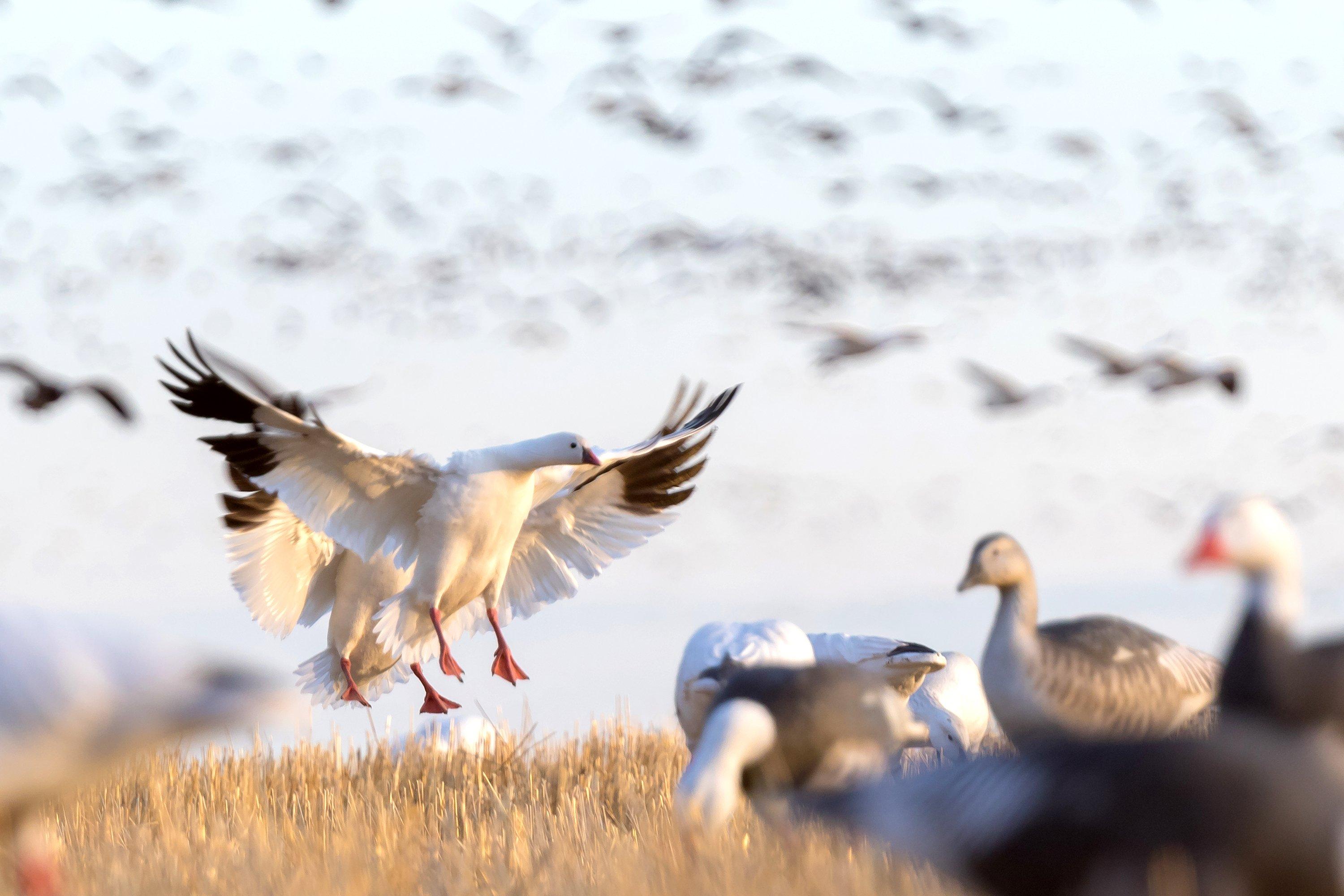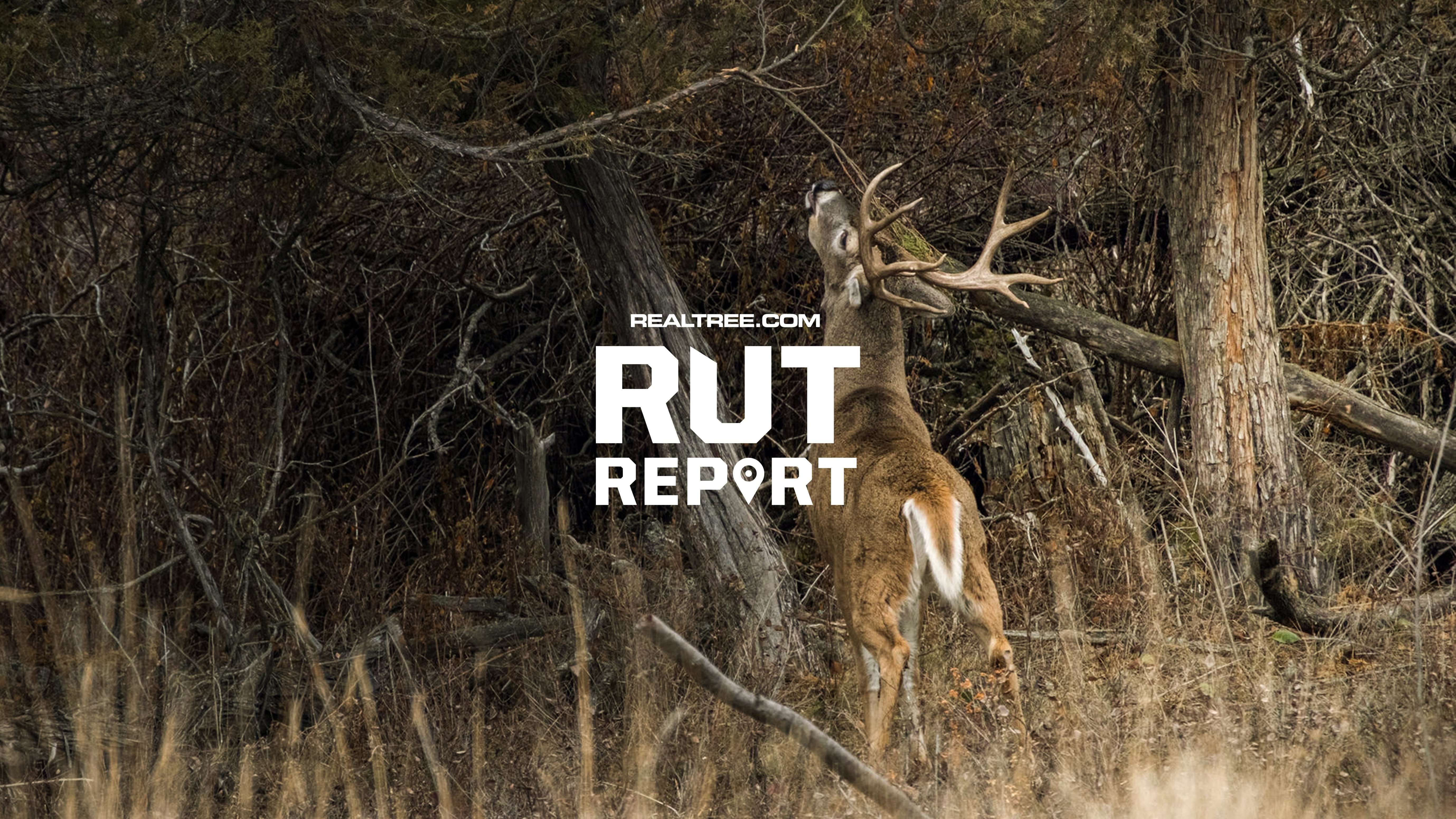Good production has goose hunters optimistic, but unpredictable spring weather might present challenges

Spring hunters hope the weather cooperates, giving them a long season to hunt what’s expected to be a bumper crop of snows. Photo by Austin Ross
Break out the white coveralls and magazine extensions, because the spring 2024 light-goose conservation season is upon us. And from many reports, it could be a year to remember.
Production during spring 2023 appears to have been very good in many areas. Hunting success during the spring conservation season (for snow, blue, and Ross’s geese) typically depends on goose production the previous spring, because juvenile birds are easier to decoy than experienced adult geese.
Don’t Miss: Waterfowl Migrations are Changing. Here’s What That Means for Hunters
According to a Delta Waterfowl press release, strong breeding conditions from Alaska east to Hudson Bay are thought to have delivered extraordinary reproduction of mid-continent snows and Ross’s geese.
“Federal and provincial banding crews are reporting phenomenal numbers of goslings for these species,” the release said.
Because banding efforts were halted during the COVID-19 years, population estimates based off banding and harvest data are not available. Many programs just resumed in 2022 after a two-year hiatus. Updated population estimates are expected next year.
An estimate of the Pacific Flyway Population of Ross’s and snow geese totaled about 1.27 million birds, which was even with the 10-year average, the release said. In the Atlantic Flyway, greater snow geese declined about 22% to 585,000 birds, which is 3% lower than the 10-year average.
Snow goose guide Tony Vandemore, owner of Habitat Flats near Sumner, Missouri, said he saw good numbers of young birds this past fall. That makes for a promising spring, but he cautioned that weather will likely be the No. 1 determinant of success.
“There’s hardly any snow in Canada and not much in North Dakota,” he said. “They’re forecasting a major warmup to the Canada border now. I’m sure winter is a long way from being over, but I expect geese to push north quickly and for the migration to be kind of strung out.”
Light geese typically follow the snow line northward during spring. During cold years with a protracted thaw, geese might stage at various stops for relatively long periods. During warmer years with rapid melting, they can shoot north quickly.
“You will always have those that want to push the snow line hard and some that lollygag behind,” Vandemore said. “I prefer years with snow lines, as it keeps them from pushing too fast. The more they get over you every day, typically the better the day is going to be. Years when the migration is strung out usually equate to not getting as many over you every day.”
Don’t Miss: Is Duck Hunting Really in Decline?
The breeding population of lesser snow geese has increased by more than 300% since the 1970s, leading to concerns in the 1990s that the birds would destroy tundra habitat at their Canadian nesting areas. The first spring season was held in 1999, featuring increased (or unlimited) bag limits, and allowing the use of new methods, including electronic callers and unplugged shotguns.












